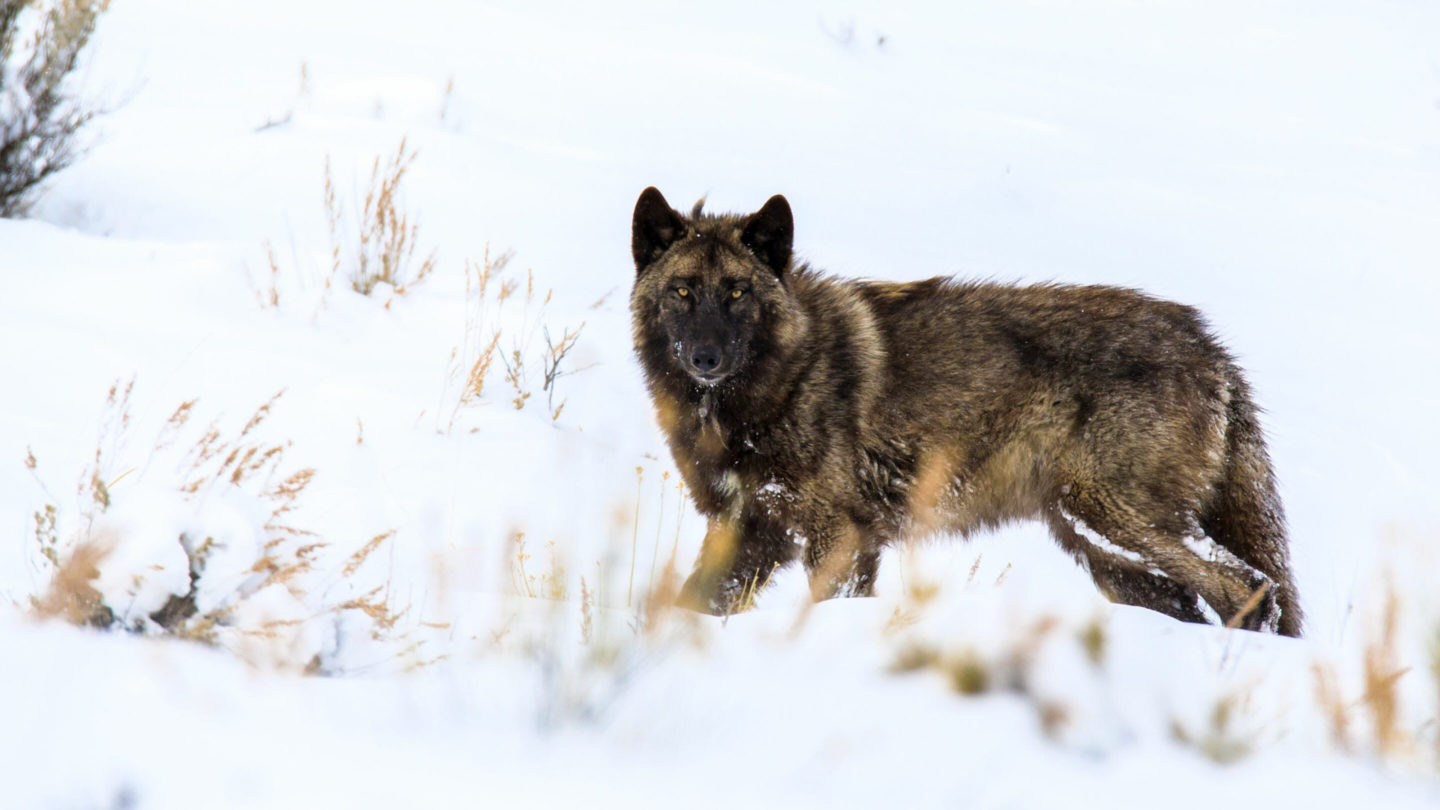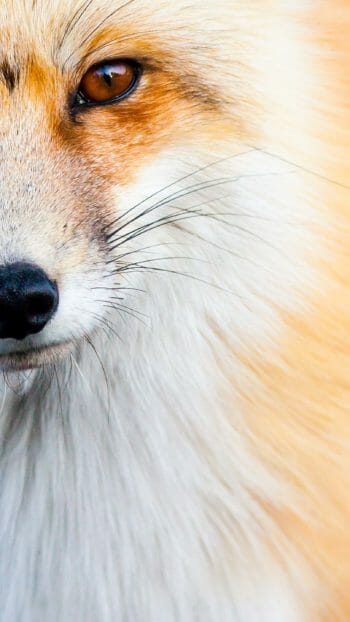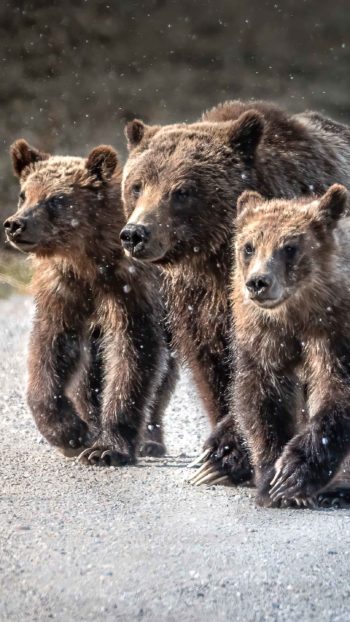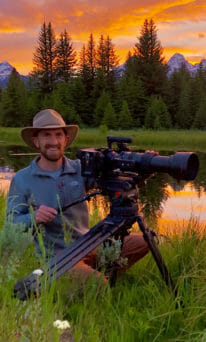While some species migrate to warmer climates or hibernate, wolves thrive during the winter in the Greater Yellowstone Ecosystem. Life has adapted to the long and potentially very harsh winter that overtakes the area for the majority of the year. In the midst of a long winter, gray wolves are active and you can experience the full majesty of one of the most mesmerizing creatures in the natural world.
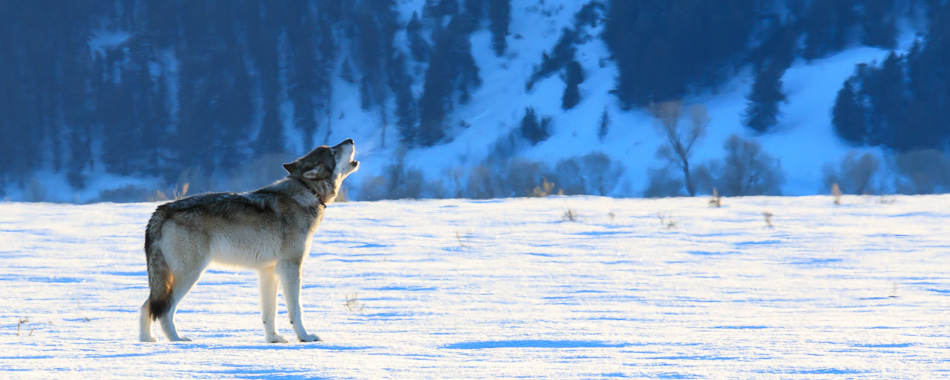
Winter Wolves in Yellowstone
To fully appreciate the splendor and regality of the grey wolf in its natural habitat, you must experience it for yourself. A wildlife safari into the Greater Yellowstone Ecosystem in search of the wolf allows you a wonderful window into the wild terrain that is the home of the apex predator. They are the top predator of the ecosystem in the winter, not having to compete with bears often, and are well adapted to survive. Wolves grow thick winter coats for the low temperatures, showing off their brilliant color patterns. Spotting wolves in the snow can be easier than in summertime when they are well covered by varying vegetation. There are also less people visiting the park in the wintertime, which can make for a more personal wilderness experience!
Guests can hope to see many things in the season of the wolf. In the winter, packs are more often seen together as a whole group. During the summer, they may be supporting a den and gathering any food possible, so you are more likely to see individuals or smaller groups. But in the winter, while focusing on large prey like elk, the whole pack can be seen together hunting, patrolling their territory, and in February, mating. During this mating season, packs tend to be more social and less aggressive towards each other. Courtship, mating, the creation or dissolving of packs, and movements outside of territories can all be observed in the wild.
Winter Wolves & the Greater Yellowstone Ecosystem
The Greater Yellowstone Ecosystem encompasses two national parks, sections of five national forests, three national wildlife refuges, BLM land holdings, state lands, tribal lands and private lands. Managing free roaming wildlife from the confines of the National Park or National Forest is a daunting task, especially when the management goals of one do not perfectly align with the other. Wolves in the Greater Yellowstone Ecosystem hold an intrinsic value as they can be viewed and enjoyed by millions – a small piece of a larger tourism industry that supports tens of thousands of local residents all across Wyoming, Montana and Idaho. Hunting wolves just outside the park boundary can have a serious effect on viewing opportunities as the wolves follow prey outside the park in the winter. Outside of the National Parks, wolves face other dangers like loss of habitat due to growing civilization and increased farmlands, hunting, disease carried by domestic dogs and other localized concerns. Wolves have long suffered a lack of positive PR and negative views of wolves are often fueled by misconceptions. Tracking and studying these animals in the wild can give amazing insights into the role wolves play as an apex predator in a large ecosystem.
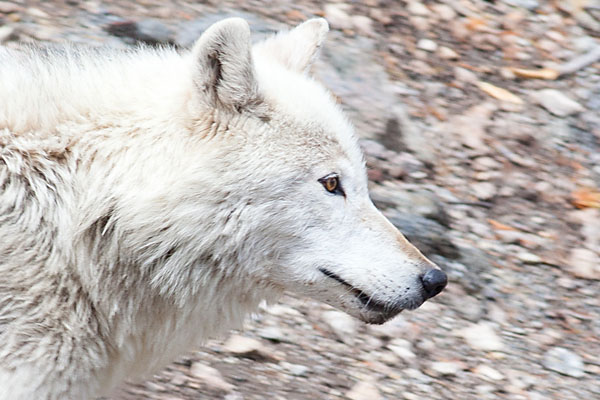
Yellowstone National Park is continuing an intensive research program on the wolves of Yellowstone since their reestablishment in 1995. By far, the best method of research is implanting GPS/radio collars on individuals, which allows scientists to view movements, behavior, predation, and gain an in-depth look into the lives of this ghost of the mountains. Collaring a wild animal may seem invasive, but it has been shown many times to be the most effective way to learn about, monitor, and help wild populations of elusive creatures. Yellowstone National Park uses this information to implement varying policies, educate the public, influence hunting regulations, and steward wolf populations so they continue to thrive in the future.
Join Us on a Winter Wolves and Wildlife Safari of Yellowstone National Park
As visitors and guides, we support this animal, this process, and this ecosystem by providing $35 million in annual revenues to gateway communities from wolf generated interest. However, as Daniel Kahneman said, “No one ever made a decision because of a number, they need a story.” Continue the incredible story of wolves in Yellowstone National Park by taking a safari with us. Witness this animal in ‘their season’, see the incredible landscape of winter in Yellowstone, and take it with you as a lasting memory. Check out our Winter Wolves and Safari in Yellowstone!

